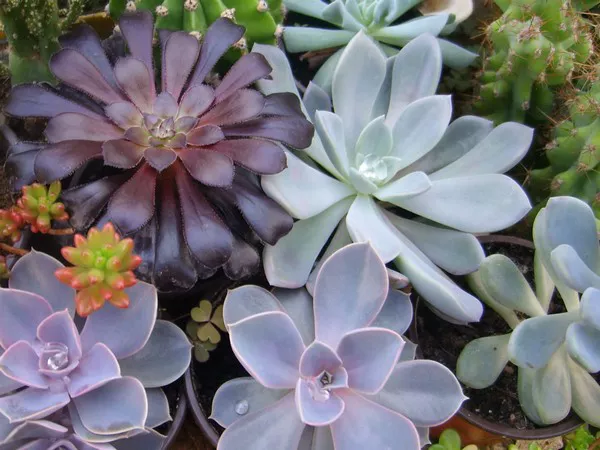Succulents have experienced a surge in popularity over recent years, gracing numerous homes and offices with their unique beauty. These resilient plants, known for their ability to store water in their fleshy leaves and stems, require specific care to flourish. One crucial element of succulent care is providing them with the appropriate fertilizer. In this article, we will delve into the world of succulent fertilizers, exploring what they need and how to nourish them effectively.
Understanding Succulent Nutritional Needs
Before diving into the realm of fertilization, it’s essential to understand the nutritional requirements of succulents. Succulents typically grow in arid regions where the soil lacks nutrients. As a result, they have adapted to survive in nutrient-poor conditions. However, they still require a balanced diet to thrive, albeit one that is different from other houseplants.
Key nutrients for succulents include nitrogen (N), phosphorus (P), and potassium (K). These macronutrients play vital roles in plant growth and development. Nitrogen promotes healthy foliage development, phosphorus enhances root growth and flowering, while potassium aids in overall plant health and stress tolerance.
In addition to these primary macronutrients, succulents also benefit from secondary macronutrients such as calcium, magnesium, and sulfur, as well as trace elements like iron, manganese, copper, and zinc. These micronutrients are essential for various physiological functions and should be provided in small quantities.
Choosing the Right Fertilizer
When it comes to selecting a fertilizer for your succulents, there are several factors to consider. Let’s explore the options and identify the best choices for nourishing these remarkable plants.
Low-Nitrogen Fertilizers: Succulents prefer a fertilizer with low nitrogen content since excessive nitrogen can lead to weak, leggy growth. Look for a balanced fertilizer with an NPK ratio of around 5-10-10 or 10-10-10.
Slow-Release Fertilizers: Slow-release fertilizers are excellent choices for succulents. These granules release nutrients gradually over an extended period, preventing the risk of nutrient burn. Opt for a slow-release fertilizer with a formula specifically designed for cacti and succulents.
Liquid Fertilizers: Liquid fertilizers diluted in water are another viable option for succulent enthusiasts. Choose a liquid fertilizer formulated for cacti and succulents and follow the instructions for dilution rates. It’s advisable to apply liquid fertilizers during the growing season when succulents are actively growing.
Organic Fertilizers: For those who prefer organic options, there are several organic fertilizers available that cater to succulent needs. Organic choices often contain natural ingredients like worm castings, seaweed extract, and composted plant matter. These fertilizers provide a gentle and sustainable approach to nourishing your succulents.
Fertilization Techniques
Now that you’ve chosen the appropriate fertilizer for your succulents, it’s crucial to understand how and when to apply it effectively. Here are some key techniques to bear in mind:
Moderation is Key: Succulents have a low nutrient requirement, so it’s important not to over-fertilize them. Applying too much fertilizer can lead to burnt roots or excessive foliage growth. Follow the instructions on the fertilizer packaging carefully and err on the side of caution if in doubt.
Water First, Fertilize Second: Before applying fertilizer, ensure your succulents are adequately hydrated. Water them thoroughly and allow the excess water to drain away before applying the fertilizer. This prevents the risk of salt build-up in the soil, which can be detrimental to succulent health.
Seasonal Adjustments: Succulents have different growth patterns throughout the year. During their active growing season, typically in spring and summer, they require more frequent fertilization. As fall and winter approach, reduce or stop fertilization since succulents enter a period of dormancy.
Application Techniques: When applying fertilizer, ensure it is evenly distributed across the soil surface. Avoid direct contact with the leaves or stems, as this can cause burns or damage. Gently water the soil after fertilizing to help the nutrients penetrate the root zone effectively.
Conclusion
Choosing the right fertilizer and implementing proper fertilization techniques are key factors in promoting the health and vitality of succulents. Remember to opt for low-nitrogen fertilizers, consider slow-release or liquid options, and explore organic choices if desired. Moderation, watering before fertilizing, seasonal adjustments, and proper application techniques will help ensure successful fertilization. By understanding the nutritional needs of succulents and providing them with the appropriate care, you’ll enjoy a thriving succulent collection that brings beauty and joy to any space. Happy fertilizing!


